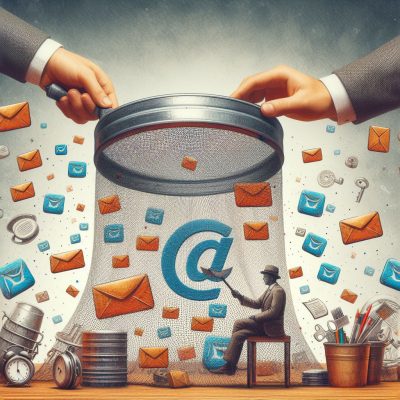The 2022 eCommerce Sales Funnel: Examples & Strategies
July 4, 2022
The ecommerce sales funnel is an important tool for businesses because it helps them convert more prospects into paying customers. Did you know that approximately 96% of customers are not ready to buy when they reach your website?
Who can blame them? I’m sure you’ve browsed your fair share of websites without making a purchase. But, by optimizing your sales funnels you’ll turn browsers into purchasers. Cha-ching.
By providing potential customers with a guided path to purchase, you’ll increase your chances of making a sale. And, by understanding the steps in the ecommerce sales funnel, you can better tailor your marketing efforts to each stage of the buyer’s journey.
In this article we’ll be looking at some of the best examples of sales funnels in action, and explain the important pieces required to successfully guide your customers through a sales funnel.
eCommerce Sales Funnel In A Nutshell
eCommerce sales funnels are a standard used by businesses to increase online sales and conversions. By providing potential customers with a guided path towards becoming a paying customer, eCommerce businesses can increase their chances of making a sale.
Sales funnel models vary, but they all share a common goal: to take a prospective customer from awareness to purchase. The steps in a typical ecommerce sales funnel might include:
- Awareness: Potential customers become aware of the business and its products or services through marketing efforts such as SEO, content marketing, or advertising.
- Interest: Once they are aware of the business, they develop an interest in what it has to offer and begin to consider whether or not it could meet their needs.
- Consideration: At this stage, potential customers compare the business to its competitors and begin to narrow down their options.
- Purchase: Finally, the customer makes a purchase and becomes a paying customer.
The ecommerce sales funnel is an important tool for businesses because it helps them convert more prospects into paying customers. By providing potential customers with a guided path to purchase, businesses can increase their chances of making a sale. And, by understanding the steps in the ecommerce sales funnel, you can better tailor your marketing efforts to each stage of the buyer’s journey.
3 eCommerce Sales Funnel Examples
1. Netflix’s Sales Funnel: Easy Email Signup
Netflix is the world’s most popular subscription streaming service, with over 213.6 million subscribers in over 190 countries. Netflix uses a smart and simple sales funnel to guide potential to sign up for a subscription.
Netflix’s sales funnel starts with their homepage, where they offer a risk-free trial after an email is provided. This ensures that customer data is collected, which can later be used to promote individualized content.
Netflix has also thought ahead to any objections potential customers may have when signing up, and addressed it through their website copy. The copy states: “Watch anywhere. Cancel anytime.” This eliminates any doubt in the customer’s mind about signing up.
After the email is provided, Netflix then takes the potential customer to a FAQ page. This page answers any further questions or objections that the customer may have before signing up. This builds trust with potential customers and helps to prevent any purchase hesitation.
After browsing the FAQ page, customers are directed to a pricing page where they can select their subscription plan. This is where Netflix makes its money, as most customers will opt for the $13.99/month standard plan.
Finally, if a customer has still not made a purchase, Netflix sends an email regarding easy signup options. This email contains links to the Netflix app, as well as helpful tips on how to get started watching.
This sales funnel works because Netflix addresses each stage of the customer journey:
- Awareness – Clean and simple landing page with prompts for email sign-up.
- Interest – FAQ page with detailed answers to common objections or questions
- Consideration – Pricing plans are clearly defined
- Purchase – Email follow up with directions for sign-up
Overall, Netflix has created a smooth and easy sales funnel that guides potential customers through the process of signing up for a subscription. By offering a risk-free trial and addressing any objections upfront, Netflix is able to increase conversion rates and grow their customer base.
2. ASOS Sales Funnel: Irresistible Email Marketing
Email marketing is one of the most important tools that businesses can use to reach and engage their customers. In fact, 81% of small to medium businesses see email as their best channel for customer acquisition.
ASOS, an online ecommerce clothing retailer, uses email marketing as the basis for their sales funnel, particularly for the “Interest” stage of the funnel. By acquiring customer emails in the awareness stage, ASOS is able to send targeted and personalized emails that drive interest and eventually convert to sales.
ASOS sends regular emails to customers, and uses engaging email subject lines in order to capture interest and increase open rates. ASOS understands the benefits of communicating with their email list regularly, which helps to build customer loyalty while also moving customers through their sales funnel.
The sales funnel used by ASOS works like this:
- Awareness: Lead capture tools, such as exit-intent popups are used on the ecommerce site to acquire emails.
- Interest: Regular emails are sent to customers promoting discounts, limited-time offers and new product releases.
- Consideration: Links placed within emails lead customers back to product pages on the ASOS online store.
- Purchase: Clear calls-to-action are placed on landing pages and product pages in order to lead customers through the checkout process to secure the final purchase.
3. Basecamp Sales Funnel: The Strength of Social Proof
Did you know that 93.4% of customers rely on customer reviews when dealing with a brand they’re not familiar with? This alone shows us just how important it is to include social proof in your sales funnel stages.
Basecamp is a great example of how to use social proof to guide customers through the different stages of the buying process. Above we see an example of the landing page website visitors are greeted with on Basecamp’s site.
Immediately we see Basecamp’s social proof in action, with multiple five star user ratings and testimonials placed above the landing page headline. This is used to guide customers through the awareness stage and into the interest stage.
Even the CTA, placed dead center in a bright button, includes further social proof beneath it. The copy states: “2,852 companies signed up in the last week alone!” This copy is optimized to push customers through to the next stage of the funnel by providing proof that Basecamp is a trusted and reliable brand.
The next stage of the sales funnel, consideration, is built around Basecamp’s 30 day free trial. The free trial gives customers a risk-free way to “consider” whether they want to purchase Basecamp.
By using an email sign-up to access the free trial, Basecamp ensures they collect customer information which can be used to convert customers in the final stage of the buying journey.
7 Strategies To Use When Creating Your Own Sales Funnel
Sales funnels are a vital part of any business – they help to increase conversion rates and boost revenue. However, many businesses don’t realize the full potential of their sales funnel and how they can further improve its effectiveness.
There are many different strategies that your business can use to further improve the effectiveness of your sales funnel. Here are some of the most popular:
I. Optimize Your Website’s User Experience
A website that is not optimized for new customers is missing out on a key opportunity to increase sales and conversions. By utilizing conversion rate optimization techniques, ecommerce websites can ensure that new visitors are given the best possible chance of becoming paying customers.
There are some simple steps that all website owners can take to improve their site’s conversion rate:
- Use clear and concise CTAs (call to action) throughout the site
- Use strong visuals to guide users through the conversion process
- Remove any distractions or elements that could cause confusion or hesitation
- Make sure the site loads quickly and efficiently on all devices
- Conduct user testing to identify any areas of improvement
There are many other factors to consider when optimizing a website for new customers, but these are some of the most important. By taking the time to ensure that your site is optimized for conversion, you can significantly increase your chances of success in attracting and converting new customers.
Not sure if your site is properly optimized for your sales funnel? Read through our Guide to eCommerce Optimization to learn 12 new ways to skyrocket your sales!
II. Create Valuable Content For Your Target Audience
If you’re not creating content that is valuable to your potential customers, you’re not going to be able to generate interest or sales. Content is at the top of the funnel for a reason – it’s what drives people to your product or service in the first place.
Think about how you search for things online. You probably start with a search engine, right? And what are you looking for when you use a search engine? You’re looking for information. Whether you’re trying to learn more about a topic, find a product or service, or just kill some time, you’re looking for content.
If your business doesn’t have any content – or worse, if it has bad content – then no one is going to find you. And if they do find you, they’re not going to be interested in what you have to offer. So it’s really important to make sure that the content you’re putting out there is top-notch.
Here’s a quick guide to the best types of content to use in your sales funnel:
| Quick Guide On Sales Funnel Content Use | ||
| Location In Funnel | Content-Type | Main Benefit |
| Top of the Funnel | Social Media Posts | Builds brand awareness and customer loyalty |
| Top of the Funnel | Blog Articles | Provide SEO and increased visibility for prospective customers |
| Middle of the Funnel | Case Studies & Whitepapers | Demonstrates why customers should choose your products/services |
| Bottom of the Funnel | Free Trial | Customers get direct access to the benefits of your product/service |
III. Personalizing Your Email Campaigns
People are bombarded with marketing messages every day, so it’s no wonder that many of us have become pretty good at ignoring them. In fact, research has shown that we’re now more likely to tune out traditional advertising than ever before.
Personalized email campaigns are a great way to cut through the noise and connect with your customers on a more personal level. By tailoring your message to each individual customer, you can increase your engagement and conversions to deliver 6x higher transaction rates.
So how do you incorporate personalization into your sales funnel? By collecting customer data in the awareness stage. The earlier you capture important customer information like names, emails and phone numbers, the easier it will be to personalize the later stages of your sales funnel.
Ready to take your eCommerce business to the next level with personalized email campaigns? Check out our blog on eCommerce personalization for more tips and ideas.
IV. Create A Loyalty Program
Loyalty programs are a great way to keep repeat customers coming back for more, and are an important piece of the sales funnel. That’s right – the best sales funnels continue to convert existing customers.
By offering coupons and discounts, you can keep them interested in your products and coming back for more. Additionally, loyalty programs can help you target marketing campaigns more effectively, since you’ll know who your most loyal customers are. Ultimately, loyalty programs can go a long way in helping to improve customer retention and keeping your sales funnel full.
V. Measure Your Sales Results
One of the most important aspects of any eCommerce business is accurately measuring results. This is where KPIs come in. KPIs, or Key Performance Indicators, can be a significant visualizer for the success of an eCommerce sales funnel.
By actively monitoring and tracking sales results, you can gain valuable insights into what’s working and what’s not. This information can then be used to improve your own sales funnel or remove problems in the customer sales journey.
The most important analytics to track for eCommerce marketing campaigns include:
Average order value – This metric tells you the average amount spent per order. It’s important to track this so you can see how effective your marketing campaigns are at driving sales.
Customer lifetime value – This metric tells you how much revenue a customer is expected to generate over the course of their relationship with your company. It’s important to track this so you can invest in acquiring and retaining customers who will generate the most revenue for your business.
Customer retention rate – This metric tells you what percentage of customers continue to do business with you after their first purchase. It’s important to track this so you can see how well you’re keeping your customers loyal and engaged.
If you want to learn more about customer retention metrics, be sure to check out CartStack’s blog post 10 Customer Retention Metrics You Need To Improve In 2022
VI. Recover Lost Sales
Abandoned carts are a huge problem for eCommerce stores, and they’re only getting worse. In fact, according to Baymard Institute, the average abandonment rate is now 69.57%.
There are a number of reasons why people abandon their carts, but some of the most common include high shipping costs, unexpected fees or taxes, and complicated checkout processes.
Fortunately, a well designed eCommerce sales funnel can help minimize lost customers and abandoned carts. By optimizing your checkout page for conversions, you can make it easier for visitors to find what they’re looking for, understand the total cost of their purchase, and complete their transaction without any issues.
Plus, with fully automated cart recovery solutions like CartStack, it is easier than ever to recover abandoned carts and send abandoned cart emails. This re-engages customers and brings them back into your sales funnel once more.
VII. Use A/B Testing
In order to figure out which strategies work best for your eCommerce sales funnel, try A/B testing! This involves trying out different versions of marketing content and then comparing the results in order to see what works best.
For example, let’s say that you’re running a paid ad campaign on Facebook. You could create two different versions of the Facebook ad – one with a more eye-catching image and one with a more persuasive copy. By running both ads at the same time and seeing which one performs better, you can start to get an idea of what works best for your audience.
Conclusion
An ecommerce sales funnel is a powerful tool that can help you increase your online sales. By understanding the different stages of the funnel, you can more effectively target your marketing efforts and drive more customers to purchase your products or services.
Remember, the four stages of the ecommerce sales funnel are:
- Awareness,
- Interest,
- Consideration and,
- Purchase.
To build a sales funnel that effectively touches on each stage, remind yourself of how Netflix structures their sales funnel:
First, offer a free trial or discount to new customers. This will help you capture their contact information so you can follow up with them later. Next, use targeted emails and ads to promote your products or services to those who have already expressed an interest in what you have to offer. Finally, provide a great customer experience so that your customers will be more likely to buy from you again in the future.
Remember, your customers are human. Approach your eCommerce sales funnel with your customers’ needs in mind, and put yourself in their shoes in order to identify common pain points.
And never forget: your sales funnel exists to address a problem and guide customers to the golden solution — your product.





